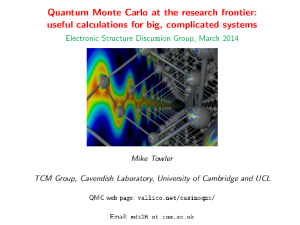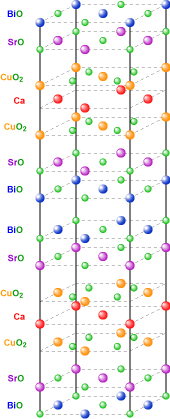Here’s a link to the slides from a talk I gave the other day in the Cavendish Laboratory Electronic Structure Discussion Group here in Cambridge (click the following picture):
Many people seem to have the impression that QMC is still stuck in the era where DFT was about 20 years ago, and that we’re restricted to calculating the lattice constant of silicon and similar tedious stuff. The idea with this talk was therefore to attempt to answer the question “Is diffusion Monte Carlo ready to solve genuine scientific problems – in ‘green environmental-type research’, say – possibly involving big and complicated systems, on reasonable timescales on today’s computers“? I will show – partly through a review of the recent literature on problems of relevance to energy research – that it most certainly is (and, almost incidentally, that attempting to use DFT for most of the problems highlighted is likely to lead to wrong answers).
The talk – which focusses on recent work of our American colleagues such as Lucas Wagner, Elif Ertekin, Richard Hennig, and Jeff Grossman and their collaborators (who frequently visit us in our summer meetings in Vallico Sotto) – includes summaries of applications involving hydrogen storage, defect energetics, photovoltaics, water chemistry and solvation, database generation, and even strongly-correlated systems such as metal-insulator transitions in oxides and coupling of lattice, charge, and spin degrees of freedom in superconducting cuprates.’
Much of the content of the slides was nicked or summarized from the papers discussed (and from a recent review article by Lucas) – full references are given and you are encouraged to read the original papers instead.
Enjoy! All comments welcome..
Mike

